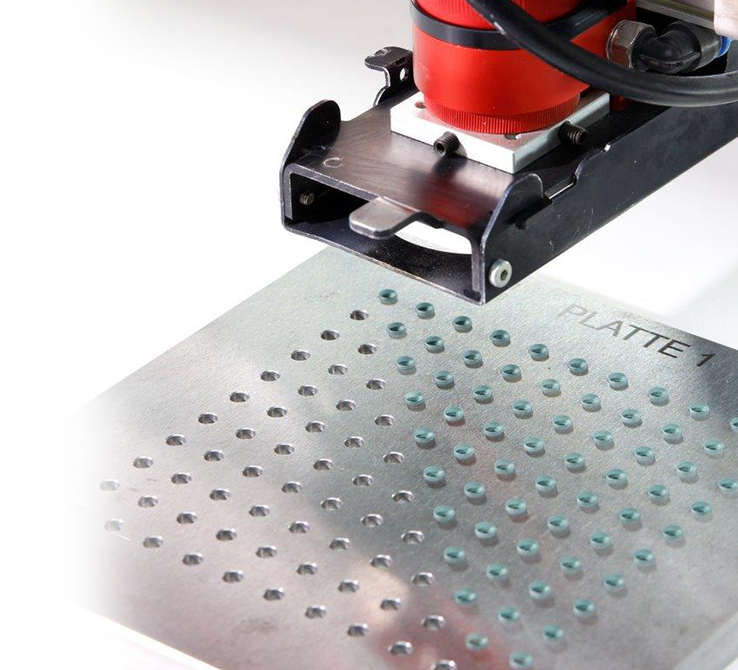

Edmund Optics® manufactures standard and custom design optical filters from prototyping to full-scale OEM production quantities. Our engineers can design and manufacture fully-custom filters, build-to-print following customer-supplied designs, and manufacture high volumes of standard design components, with over 960 standard coating designs to choose from.
Wavelength Ranges from 220nm to 10.6µm
Over 960 existing coating designs that can be modified to your needs
Fully customized filter and coating designs
Test certificates and spectral measurements available
Change control available
ISO 9001: 2015 and ITAR certified manufacturing facility
Precision optical filters block, transmit, and reflect selected wavelengths in your system. Whether you need to clean up a laser beam, increase contrast in a machine vision system, or separate fluorescence from excitation wavelengths, Edmund Optics® has an appropriate filter solution.
Edmund Optics® is a leading producer of optical filter coatings including fluorescence, dichroic, narrow bandpass, multi-bandpass, notch, edge, and neutral density filters. From small quantities for prototyping to large quantities for production, our engineers can create a solution for you. Our experience in a wide variety of applications will help guide you to finding the best filters for your application. What can we make for you?
| Filter Coating Capabilities | |||
|---|---|---|---|
| Dimensions (Diameter or Square) | 4 – 150mm diameter, 4x4 - ~100x100mm | ||
| Anti-Reflective Wavelength Range | 250 – 1600nm | ||
| Shortpass Filter Cut-Off Wavelength | 400 – 1600nm | ||
| Longpass Filter Cut-On Wavelength | 240 – 7300nm | ||
| Bandpass Filter CWL, OD, and Bandwidth | 193 – 10,600nm, >OD 7, Narrowband to Broadband | ||
| Notch Filter CWL | 355 – 1064nm | ||
| Filter Center Wavelength (CWL) Tolerance | ±1nm | ||
| Filter Edge Tolerance | <1% Deviation, <0.2% Special Cases | ||
| Durability | Environmental: Humidity per MIL-STD 810H, Section 507.6. Temperature per MIL-STD-810H, Section 501.7 and 502.7 Physical: Adhesion per MIL-PRF-13830B, Section C.4.5.12. Moderate abrasion per MIL-PRF-13880B, Section C. 4.5.11. Cleaning per MIL-C-48497A Secion 4.5.4.2 |
||
| Capabilities by Filter Type | |||||||||||
|---|---|---|---|---|---|---|---|---|---|---|---|
| Description | Filters for Fluorescence / Life Science Applications | Hard Coated Bandpass Filters | High-Precision Edge Filters | Optical Notch Filters | |||||||
| Types of Filters | Fluorescence Bandpass Filters | Fluorescence Dichroic Filters | Narrow Bandpass Filters | Medium Bandpass Filters | Broad Bandpass Filters | Shortpass Filters | Longpass Filters | Dichroic Filters | Laser Line Notch Filters | Multi-Line Notch Filters | |
| Typical Specifications | Transmission ≥ 95% | Transmission ≥ 95% | Transmission ≥ 95% | Blocking ≥ OD6.0 | |||||||
| Blocking ≥ OD6.0 | Reflection ≥ 98% | Blocking ≥ OD4.0 | Blocking ≥ OD4.0 | Reflection ≥ 98% | Narrow FHWM | 2, 3, and 4 Wavelength Designs | |||||
| Bandwidths between 10 - 80nm | Transmitted Wavefront Distortion (TWD) ≤ λ/4 | Bandwidths between 5 and 20nm | Bandwidths between 25 and 50nm | Bandwidths ≥ 50nm | Slope Factor ≤1% | Transmitted Wavefront Distortion (TWD) ≤ λ/4 | Broad Transmission Ranges | Transmitted Wavefront Distortion (TWD) ≤ 1λ | |||
| Environmental Durability: Humidity per MIL-STD 810H, Section 507.6. Temperature per MIL-STD-810H, Section 501.7 and 502.7 | |||||||||||
| Physical Durability: Adhesion per MIL-PRF-13830B, Section C.4.5.12. Moderate abrasion per MIL-PRF-13880B, Section C. 4.5.11. Cleaning per MIL-C-48497A Secion 4.5.4.2 | |||||||||||
| Comments | Typically used in applications requiring fluorescence detections such as fluorescence microscopy and spectroscopy, qPCR or Flow Cytometry. | Commonly used for clean up of LED or laser sources, fluorescence detection, and spectroscopic and machine vision applications. | Good for spectral sorting and blocking of certain spectral ranges such as UV or IR blocking. Dichroic filters are commonly used for separation of excitation and emission in fluorescence applications. | Blocking of common laser lines such as Nd:YAG, Yb:YAG, HeNe, Argon Ion, Fiber, Ti:Sapphire, and diode lasers | |||||||
Edmund Optics® has state-of-the-art optical filter coating facilities in Japan and US with capabilities including:
And supporting equipment including:


Ion Beam Sputtering Coating Chambers
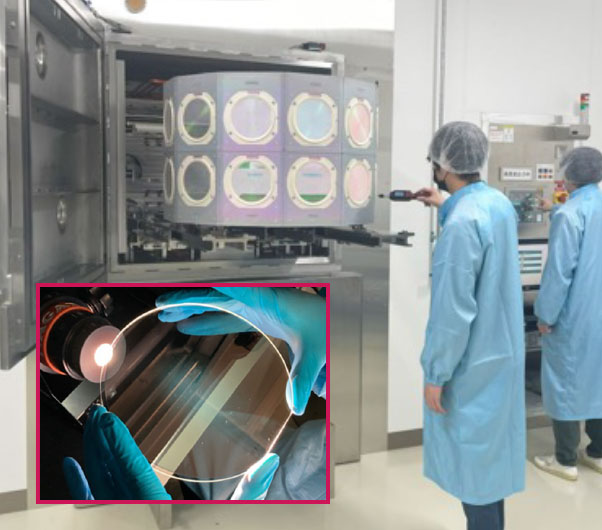
High-Volume Magnetron Sputtering
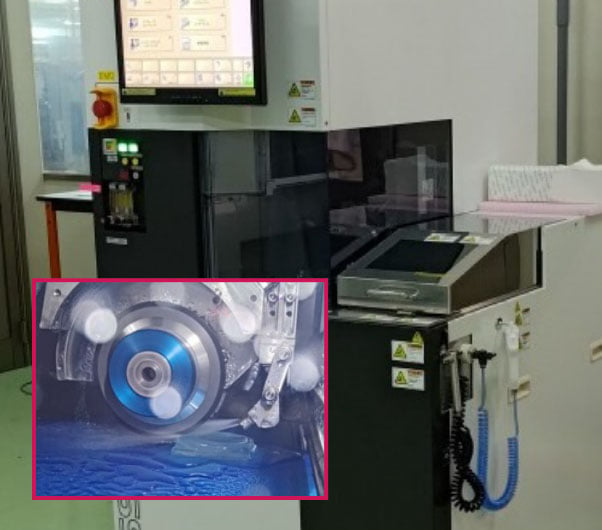
Dicing platform
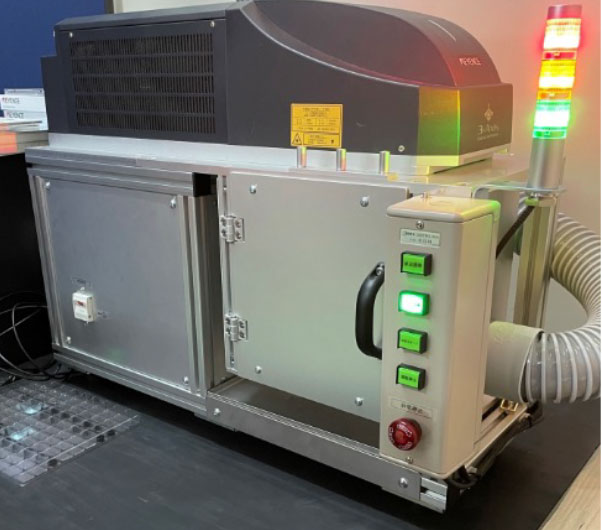
Keyence Laser Engraver
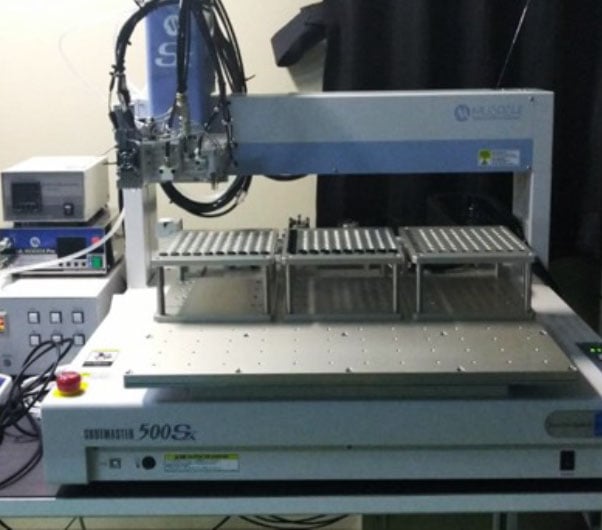
Assembly robot

59 SCHOTT Optical Filter Glass Types in Stock
Online Tool for Quick Quotes of Custom Filter Glass Here
No Minimum Order Quantity for Both Standard and Custom Dimensions
Build-to-Print Manufacturing and Full-Custom Design
Rapid Turnaround for Prototypes
ITOS, the German manufacturing site of Edmund Optics®, offers optical filter glass in customized shapes, sizes from 4-160mm, and at various thicknesses. Utilizing state-of-the-art production equipment and an extensive inventory of the entire range of SCHOTT Optical Filter Glass, including a large selection of raw glass plates, allow for rapid delivery of small quantities of customized filters. This DIN ISO 9001:2015 certified manufacturing facility guarantees reliability and quality in volume production. ITOS also supports analysing your filter and providing you the required properties.
Contact us today to speak with an expert or to request a quotation.
Choose from 60 different types of filter glasses to match the spectral requirements of your application. Whether you require small quantities for prototyping or build-to-print manufacturing for OEM systems, or simply need to define the filter specifications, we have the capabilities to cut and polish optical filter glass to ensure the success of your project.
| Optical Filter Glass Capabilities | ||
|---|---|---|
| Dimensions | Ø 3 to 160mm or 2 x 2mm to 160 x 160mm | |
| Dimensional Tolerances | For ≥ 2 – 49mm: ±0.2mm, for ≥ 50 – 99mm: ±0.3mm, for ≥ 100 – 160mm: ±0.4mm | |
| Thickness | 0.5 – 4.0mm | |
| Thickness Tolerances | For ≤ 1mm: ± 0.1mm, for > 1 – 4mm: ± 0.2mm | |
| Surface Finish* | P2 | |
| Form Errors, Planarity* | 3/10-15 for diameters up to 50mm | |
| Surface Defects* | For ≥ 2 – 49mm: 5/3 x 0.63mm, for ≥ 50 – 160mm: 5/4 x 0.63mm | |
| Parallelism* | 3 arcmin | |
| Edges & Bevels | Round parts ≥ Ø5mm: polished edges & protective bevel Square & rectangular parts < 50 x 50mm: polished edges, no bevel |
|
| Edge Chips | For ≤ Ø80mm: < 0.3mm (5/E0.3), for ≥ Ø81mm < 0.6mm (5/E0.6) | |
| SCHOTT Optical Filter Glass Types Available for Customization | |||||
|---|---|---|---|---|---|
| BG3 | BG60 | VG9 | GG395 | GG495 | RG695 |
| BG7 | BG61 | VG20 | GG400 | OG515 | RG715 |
| BG18 | BG62 | UG1 | GG420 | OG530 | RG9 |
| BG25 | BG63 | UG5 | GG435 | OG550 | RG780 |
| BG38 | BG64 | UG11 | GG455 | OG570 | RG830 |
| BG39 | BG67 | BG36 | GG475 | OG590 | RG905 |
| RG850 | BG40 | RG1000 | N-WG280 | KG5 | RG610 |
| NG5 | BG42 | KG1 | N-WG295 | NG1 | RG630 |
| NG9 | BG50 | KG2 | N-WG305 | NG3 | RG645 |
| NG11 | BG55 | BG59 | KG3 | N-WG320 | NG4 |
| RG665 | RG665 | ||||
| General Information SCHOTT Optical Filter Glass | |||||
| UG | Black and blue glasses, UV transmitting | ||||
| BG | Blue, blue-green, and multiband glasses | ||||
| VG | Green glasses | ||||
| GG | Nearly colorless to yellow glasses, IR transmitting | ||||
| OG | Orange glasses, IR transmitting | ||||
| RG | Red and black glasses, blocking visible, IR transmitting | ||||
| NG | Neutral density glasses with uniform attenuation in the visible range | ||||
| WG | Colorless glasses with different cut-offs in the UV, transmitting in the visible and IR ranges | ||||
| KG | Virtually colorless glasses with high transmission in the visible and absorption in the IR | ||||
Colour Filter Glass Pricing Tool
for Custom Sizes
